What is a condensing unit: device and principle of operation
Almost all ventilation systems include a condensing unit, which is responsible for heating or cooling the air. KKB is a class of non-autonomous air conditioners.
In it, the refrigerant in the liquid state passes through the preparatory stage, and then enters the heat exchanger and evaporates.
In this material we will talk about the principles of operation of this equipment, we will dwell in detail on the nuances of its selection and some features of the installation.
The content of the article:
Condensing unit components
KKB - a monoblock with compactly placed nodes in it. They are used in tandem with forced ventilation devices, with split systems any type equipped with indoor units or direct cooling systems. They can replace the chiller when the installation of the latter is impossible due to the large load on the roof.
The main elements of this significant part of the ventilation system are:
- compressor;
- engine;
- centrifugal or axial fan;
- a heat exchanger acting as a condenser;
- power supply system;
- control system.
In addition, KKB is equipped with connectors that enhance its performance and consist of a throttle, a special filter, a solenoid valve, a sight glass. Modern KKB models operate on ozone-friendly refrigerants. Highly ecological freon R-22, R-407C, R-410a can circulate in them. They are suitable for any ventilation installations, as well as for duct coolers.

The internal elements of the KKB are isolated and grounded to avoid injury from electric shock.Manufacturers cover the surfaces of all parts of the device with an anti-corrosion coating. This allows you to operate it in humid conditions.
Advantages of the condensing unit
If you compare KKB with chiller, then we can note the obvious advantages of the first:
- The production of one kW of cold is cheaper, because there is no intermediate coolant.
- Convenient adjustment. Each KKB is connected to one supply unit, therefore, control is carried out using standard controllers.
- Simple installation. No additional fans, ducts or other elements are needed. Only the installation of an evaporator heat exchanger is required.
KKB can be a component of a large ventilation system and a separate unit built into the device. They are stationary floor and wall mounted. Stationary blocks are placed near buildings and on the roof.
The KKB compressor in its modern design is equipped with protection against unstable operation of the power supply network, moisture, mechanical damage, critically high and low temperatures. All this violates the functioning of the unit. The case in which the block is enclosed is made of galvanized steel, therefore it does not corrode.
For faster cooling of the device, manufacturers often supplement the heat exchanger, condenser, pipes with aluminum inserts. The heat exchanger is also protected from harmful effects - a special anti-corrosion alloy is applied to its surface.
To be able to control the pressure inside the CCM, all elements in contact with the coolant are equipped with revision nipples.
Despite these advantages, it often happens that after installation KKB quickly fails or does not turn on at all. Experts point to one reason. This is an illiterate selection of the compressor-compensatory unit and the evaporator.
The nuances of selecting KKB
Most often, a power-condensing unit suitable for specific circumstances is selected. To do this, you will have to perform a standard calculation based on the performance of the ventilation unit in mᶾ / h, temperature, outdoor humidity in the summer, and supply air temperature. This parameter plus humidity is selected for a specific region according to SNiP.
The first parameter take degrees 6 less than the optimum room temperature. In addition to these values, you will have to use the e-chart. Then, all the found parameters are substituted into the formula: Qhol = 1.2xLx (Inar-Iprit) / 3600.
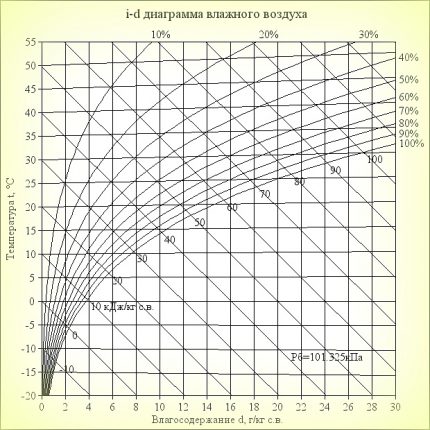
To do without calculations at all, sometimes they use a simplified technique. It is established that for every 10 m² and a room height of 3 m, 1 kW of cold is needed. If the room area is 200 m², a 20 kW unit is required.
Experts advise you to pay attention to several nuances that are important for the correct selection of the unit. In order to guarantee the effective operation of KKB, it is necessary to rely on it not for the maximum temperature regime of the outdoor air, but for the minimum provided for by the KKB operating range.
If you perform a calculation based on the maximum outside temperature, the unit will be able to work normally when the outdoor temperature is equal to the calculated one or rises above this value. When its value drops, such a phenomenon will be observed as soon as the partial boiling of the refrigerant in the evaporator. The liquid freon will return to the compressor suction. This will be followed by jamming of the latter.
For normal operation, the compressor capacity should be less than the maximum evaporator capacity.The connection kit is not always sold with the condensing unit. Sometimes you need to select it yourself, but for this you need to know the technical features of the elements included in this binding unit.
Recommendations for the selection of filter driers
This unit is necessary to absorb moisture, various unnecessary impurities from the freon line. Its selection is carried out according to the tables of manufacturers, taking into account the brand of refrigerant. In addition, it is important to know in advance how this element will be installed - by soldering, flanging, on fittings. The connecting dimensions will depend on this.
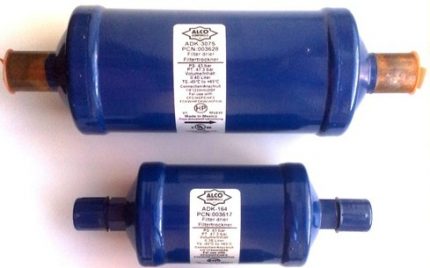
It affects the choice of filter and the performance indicator for the liquid, which affects the gap between replacements. It is also important how KKB will function - exclusively for cold or for heat. In the first case, freon will move in one direction, in the second - in both directions.
How to choose a sight glass?
This element is necessary to control the level of freon filling, the state of the filter, the presence of moisture in the circuit. When choosing it, they proceed from the brand of freon, the ambient temperature, the method of installing glass, the presence of a humidity indicator, a critical level of humidity.
If freon R407C or R410A circulates in the loop, then polyester oil for these grades can form acid and alcohol when reacted with water. This will be signaled by the changed color of the sight glass, which will help to prevent the compressor from jamming as a result of oil decomposition. The green state of the indicator indicates the normal condition of the refrigeration circuit.
The transition to the yellow hue indicates that the refrigeration circuit needs to be monitored more closely. A completely yellow indicator indicates an unacceptable amount of moisture in the circuit. After taking measures to remove it, the filter will have to be changed.
Thermostatic expansion valve selection
The expansion valve regulates the flow of refrigerant from the unit to the evaporator for cooling. Choose it by type of refrigerant, by nominal refrigerating capacity, boiling point, subcooling, condensation. Take into account the temperature level of the working environment - maximum and minimum.
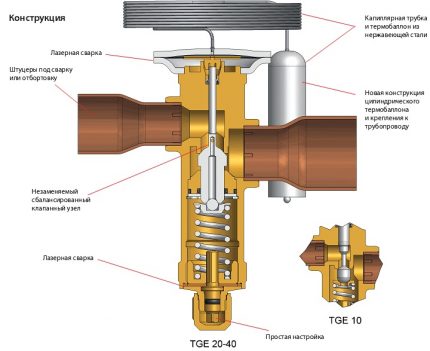
It affects the choice and method of pressure equalization - internal or external. You need to know how to install the expansion valve. Usually it is installed under soldering, flanging or on fittings.
Solenoid Valve Selection
The choice of this element is influenced by the brand of freon, the maximum indicators of operating temperature and pressure. Another important parameter is the peak value of the opening differential pressure. You should pay attention to the connecting dimensions, performance.
The coefficient Ku, which takes into account the change in the flow rate of the working medium when the pressure difference solenoid valve will be 1 bar.
Varieties of condensing units
The type of KKB is determined by the type of self-cooling. It can be carried out using air, water, an external cooler. Units of the first type have a built-in fan that generates air flow.
If an axial fan is included in the design, the unit is mounted outside the building. In the presence of a centrifugal fan, the installation of the unit is carried out directly in the room.

A condensing unit in which the condenser is cooled with water is more powerful. It does not require a large amount of air for its work, therefore it is compact and designed for indoor installation. Its installation is possible at a considerable distance.
KKB with a remote type capacitor is used less often, mainly with a lack of space in the room. In this case, the unit itself is installed inside the room. The heat exchanger is placed outside.
The principle of operation of KKB
The operation of the compressor-condenser unit is based on the law of physics on the absorption of thermal energy when the state of the refrigerant changes from a liquid state to another aggregate form. When the process proceeds in the opposite direction, the previously accumulated thermal energy is released and transmitted to the consumer.
When KKB works on cooling, inside the heat exchanger there is a vaporization of freon, then its condensation. When heated, the opposite is true.
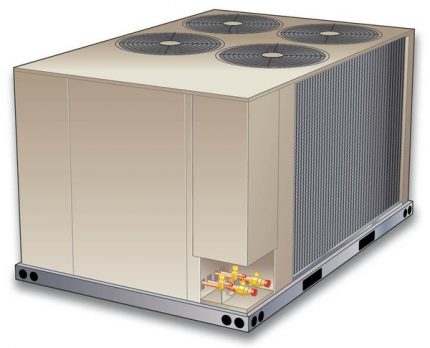
While the installation of the chiller system allows you to individually set the temperature regime for each room, when using CCB, the temperature will have the same value everywhere. Set it on the main thermostat for the entire building.
Air-cooled KKB
The refrigeration circuit has 2 heat exchangers. One of them is a condenser heat exchanger located in the KKB itself. The second is the evaporator heat exchanger, located in the air cooler of the central air conditioner. In addition to these nodes, a compressor included in the KKB housing is included in the refrigeration circuit.
Also its elements are filter drier, expansion valve, sight glass. The last three elements are located on the interblock liquid line near the evaporator.
Unlike other components of the refrigeration circuit, the cross-section for the passage of freon in the thermal expansion valve is small. Its adjustment depends on the evaporation temperature of freon in the heat exchanger and the pressure value. Prior to expansion joints, the compressed gaseous freon in the condenser heat exchanger has excess pressure pumped by the compressor. After expansion valve expansion, the pressure in the evaporator heat exchanger decreases.
In the condenser, the refrigerant, having lost heat to the surrounding space, condenses. After the part of the heat energy has been released, the freon is still under increased pressure, but only until the thermal expansion valve passes. After that, the pressure drops sharply and cooling occurs.
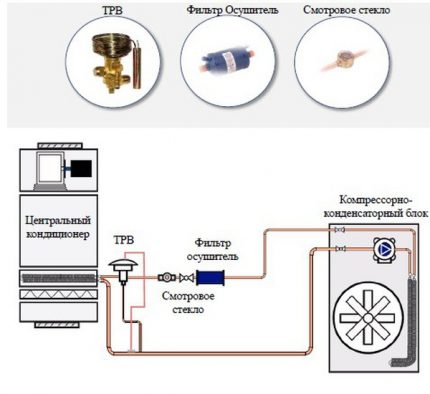
Under the influence of the centrifugal fan of the main air conditioner, the heat exchange surface of the evaporator heats up. It acquires a high temperature and passes into the gaseous phase and, before that, liquid refrigerant circulating in the evaporator. At the same time, it absorbs heat from the supply air, thereby cooling it.
After the refrigerant in the form of gas is again in the compressor, being compressed, it is transformed into a liquid state of aggregation and the circulation process resumes.
Water-cooled unit
The KKB installation with water cooling provides preliminary hydraulic calculations and professional installation. The cost of these blocks is higher than that of air counterparts. This is explained by the need for additional costs for the installation of the cooling tower, laying a circuit to it, the purchase of pumps.
These units are intended for installation inside the building. The condenser is cooled here with the help of a fluid making a circular revolution in a closed loop. A cooling tower is installed on the street - wet or dry, or running water is used.
This climatic equipment has an additional heat exchanger. It cools the refrigerant and, partially taking the heat, heats the circulating water, which can then be reused. Its use in the heating system for hot water supply justifies a few large investments in the purchase of equipment of this type.
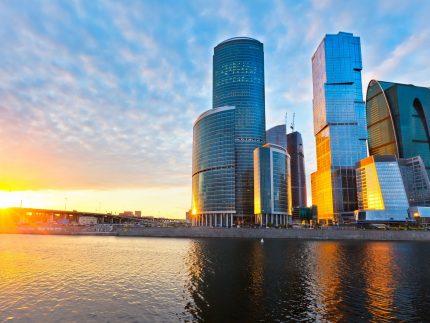
The advantage of water-cooled units is their higher power and the possibility and prospect of increasing the distance between the unit and the tower as convenient as possible. If running water is used as a cooler, the cost of air conditioning drops significantly.
Features installation KKB
The installation of the condensing unit must be preceded by thorough preparation. First of all, check the compliance of such unit data as phase connection, voltage, current frequency with the corresponding characteristics of the power line.
There should be no dust in the place where the KKB installation is planned, otherwise it can get into the heat exchanger. The air stream leaving the condenser must not return to it.
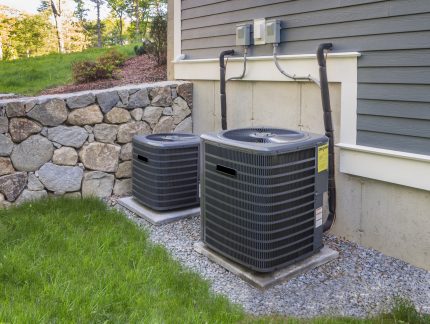
If the unit is installed on the ground, it must be positioned so that rain and snow do not get into it. The space around the unit should be free, without obstruction to air movement and maintenance. Do not connect ducts that supply or remove air from the unit.
The assembly and installation work of the compressor and condenser units is carried out by specialized companies whose employees have the appropriate qualifications and certificates. To connect the unit you need to have special tools and equipment. It also happens that the unit has to refuel or to complete its full refueling.
Reputable KKB manufacturers
KKB with high performance is produced by the Italian company Aermec. The range includes professional air-cooled compressor and condenser units and equipment for home use.
KKB Aerotek, produced by the eponymous international company based in Switzerland, are popular. Equipment parameters are fully matched to the Russian consumer.
The French company Airwell is famous for the quality of its equipment. No less popular are Carrier units, supplied to the HVAC market by the American Carrier Corporation. Daikin from Japan has its own representative office, whose climate equipment is also in great demand.
Conclusions and useful video on the topic
Components of a condensing unit:
The smart choice of a condensing unit:
To provide excellent ventilation for the office, home or other premises, a condensing unit will be the best solution. The unit itself has a small weight and dimensions, but this does not reduce its functionality. It is important not to violate the operating rules and adhere to the instructions, then the unit will serve for many years.
If you have any questions about the topic of the article, you can ask them in the comments section, and we will try to give them an extremely clear answer. There you can leave a comment on this article or share advice on choosing KKB.

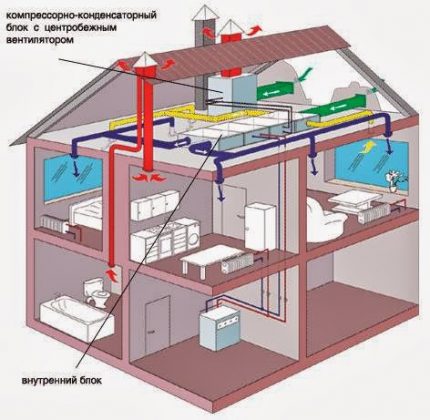
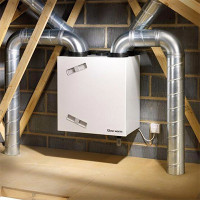 Supply and exhaust ventilation with heat recovery: operating principle, an overview of the advantages and disadvantages
Supply and exhaust ventilation with heat recovery: operating principle, an overview of the advantages and disadvantages 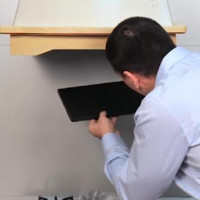 Charcoal filter for hood: device, principle of operation and replacement technology
Charcoal filter for hood: device, principle of operation and replacement technology 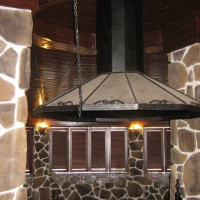 Exhaust hood for the kitchen: operating principle, device, types of units
Exhaust hood for the kitchen: operating principle, device, types of units  Supply and exhaust ventilation: principle of operation and features of the arrangement
Supply and exhaust ventilation: principle of operation and features of the arrangement 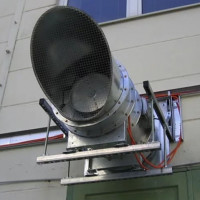 Smoke exhaust system: installation and installation of smoke ventilation
Smoke exhaust system: installation and installation of smoke ventilation 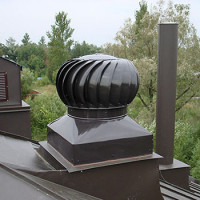 Turbo deflector for ventilation: principle of operation and comparison of types of rotational deflectors
Turbo deflector for ventilation: principle of operation and comparison of types of rotational deflectors  How much does it cost to connect gas to a private house: the price of organizing gas supply
How much does it cost to connect gas to a private house: the price of organizing gas supply  The best washing machines with dryer: model rating and customer tips
The best washing machines with dryer: model rating and customer tips  What is the color temperature of light and the nuances of choosing the temperature of the lamps to suit your needs
What is the color temperature of light and the nuances of choosing the temperature of the lamps to suit your needs  Replacement of a geyser in an apartment: replacement paperwork + basic norms and requirements
Replacement of a geyser in an apartment: replacement paperwork + basic norms and requirements